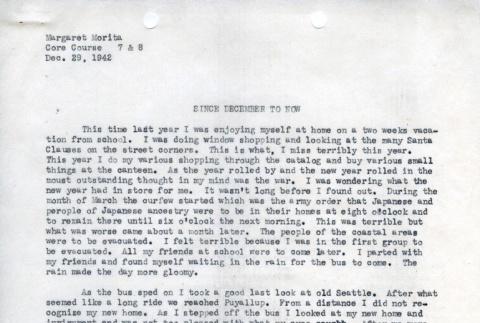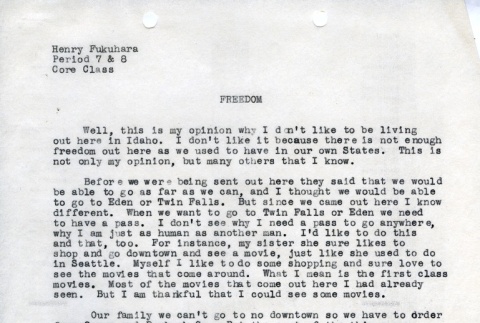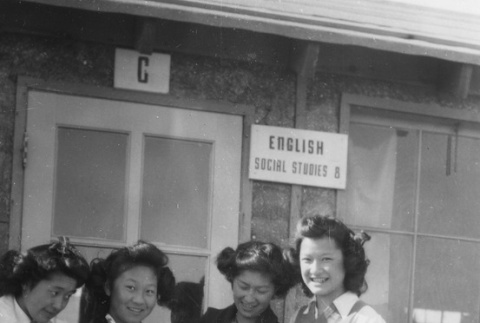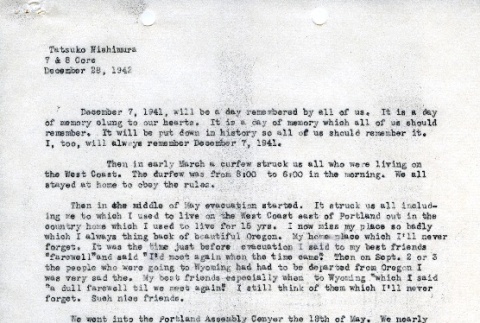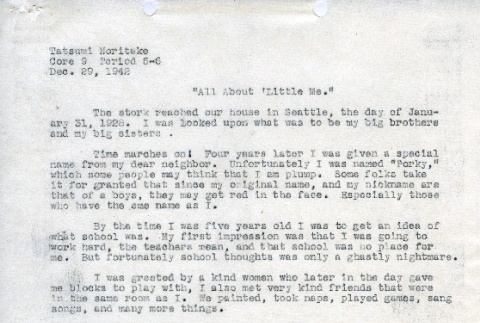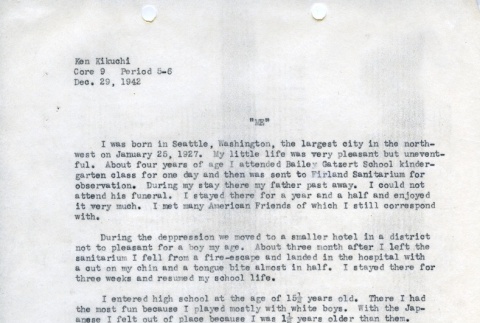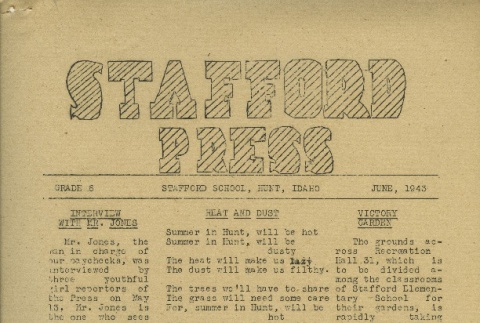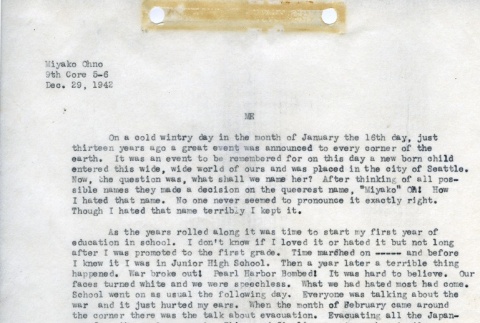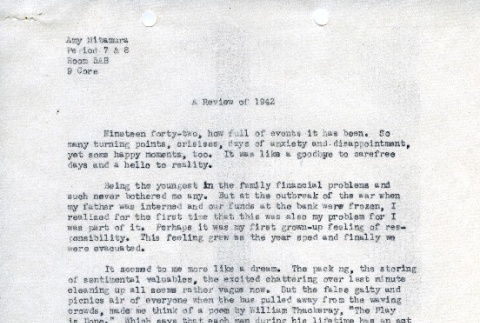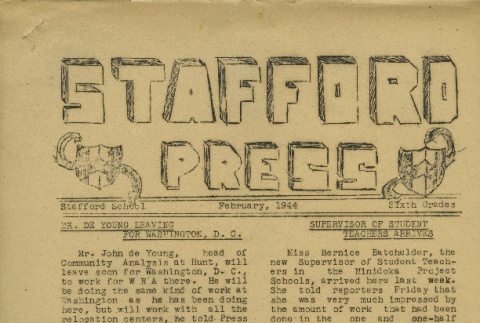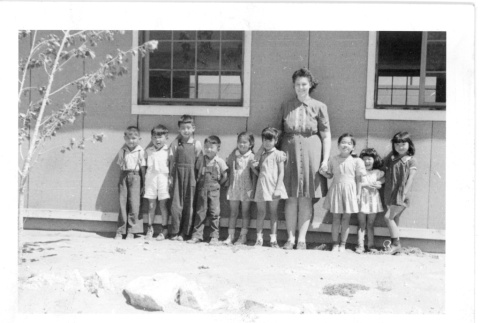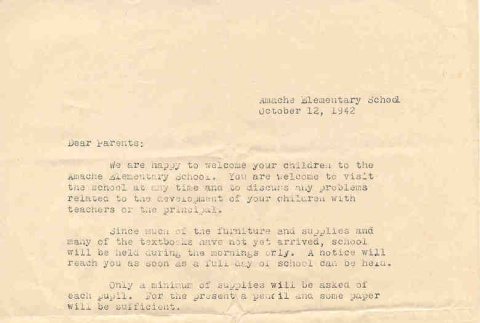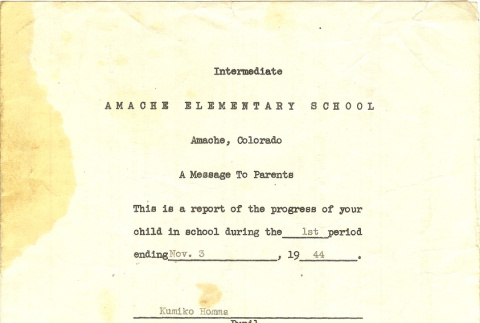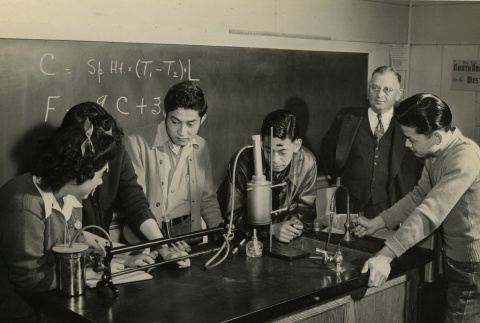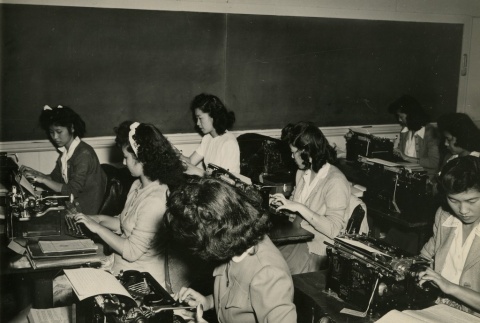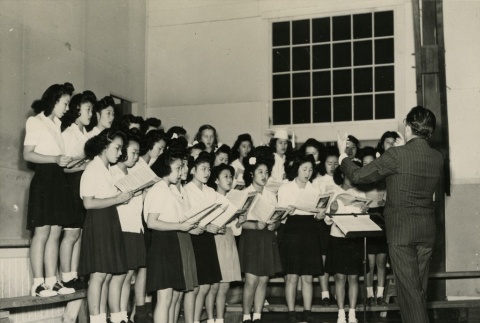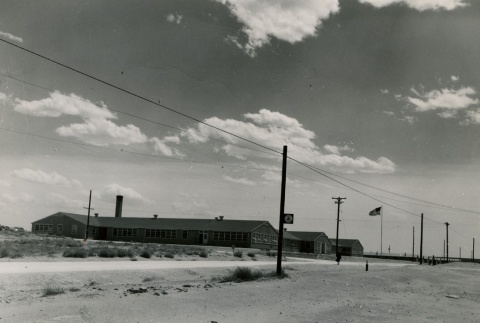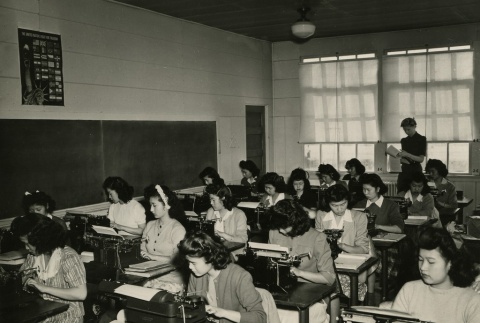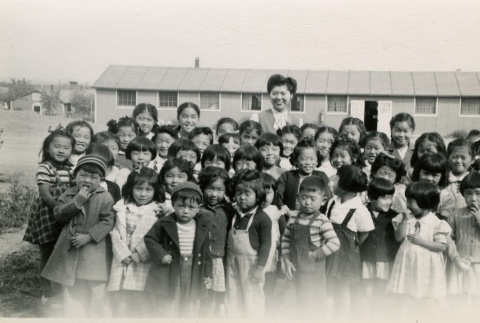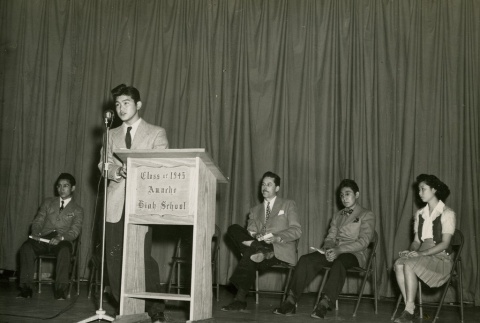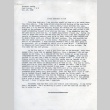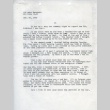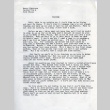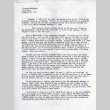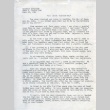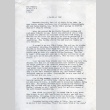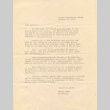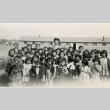Education
Schools were quickly organized in the concentration camps, but they suffered from crude facilities and lack of teaching materials. Instruction was given for nursery through high school, and adult education was offered. Trained teachers were in short supply, however, and uncertified Japanese Americans with college degrees often filled in. The War Relocation Authority (WRA) deliberately emphasized Americanization in the education program. Some found it painfully ironic to watch incarcerated youth recite the Pledge of Allegiance.
World War II
(231)
Concentration camps
(1434)
Education
(1448)
1448 items
1448 items
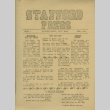
doc
Stafford Press, June 1943 (ddr-densho-156-428)
Publication of the Sixth Grade, Stafford School, Minidoka concentration camp.

doc
Stafford Press, February 1944 (ddr-densho-156-430)
Publication of the Sixth Grade, Stafford School, Minidoka concentration camp.
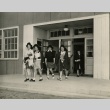

img
High school physics class (ddr-densho-159-72)
Left to right: unknown, Mits Omoto (student teacher), George Yonemura, Harry Williams (teacher), Martha Murakami.
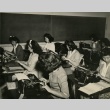

img
Girls Glee Club (ddr-densho-159-183)
The Amache High School choir director was Lowell M. Jackson.
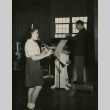
img
Japanese American playing the clarinet (ddr-densho-159-69)
Jane Nakamura Ono on clarinet, Charles Hinman, conductor.
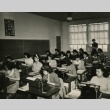
img
High school typing class (ddr-densho-159-73)
Amache High School. Teacher: Marguerite Anderson. Student to right of teacher: Toshiko Sakamoto Aiboshi.


img
High school commencement (ddr-densho-159-78)
Dag Nakatagawa giving a speech at Amache High School's commencement.
